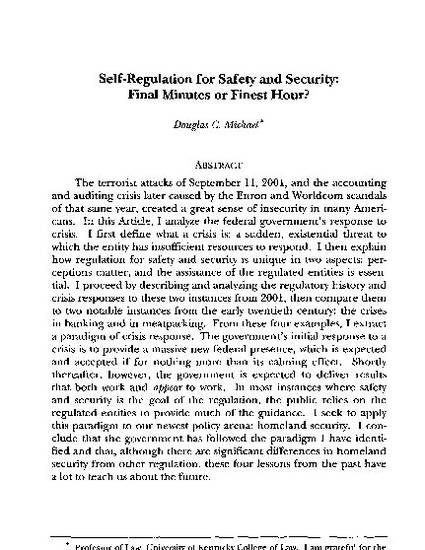
The terrorist attacks of September 11, 2001, and the accounting and auditing crisis later caused by the Enron and Worldcom scandals of that same year, created a great sense of insecurity in many Americans. In this Article, I analyze the federal government's response to crisis. I first define what a crisis is: a sudden, existential threat to which the entity has insufficient resources to respond. I then explain how regulation for safety and security is unique in two aspects: perceptions matter, and the assistance of the regulated entities is essential. I proceed by describing and analyzing the regulatory history and crisis responses to these two instances from 2001, then compare them to two notable instances from the early twentieth century: the crises in banking and in meatpacking. From these four examples, I extract a paradigm of crisis response. The government's initial response to a crisis is to provide a massive new federal presence, which is expected and accepted if for nothing more than its calming effect. Shortly thereafter, however, the government is expected to deliver results that both work and appear to work. In most instances where safety and security is the goal of the regulation, the public relies on the regulated entities to provide much of the guidance. I seek to apply this paradigm to our newest policy arena: homeland security. I conclude that the government has followed the paradigm I have identified and that, although there are significant differences in homeland security from other regulation, these four lessons from the past have a lot to teach us about the future.

Seton Hall Law Review, Vol. 36, No. 4 (2006), pp. 1075-1134